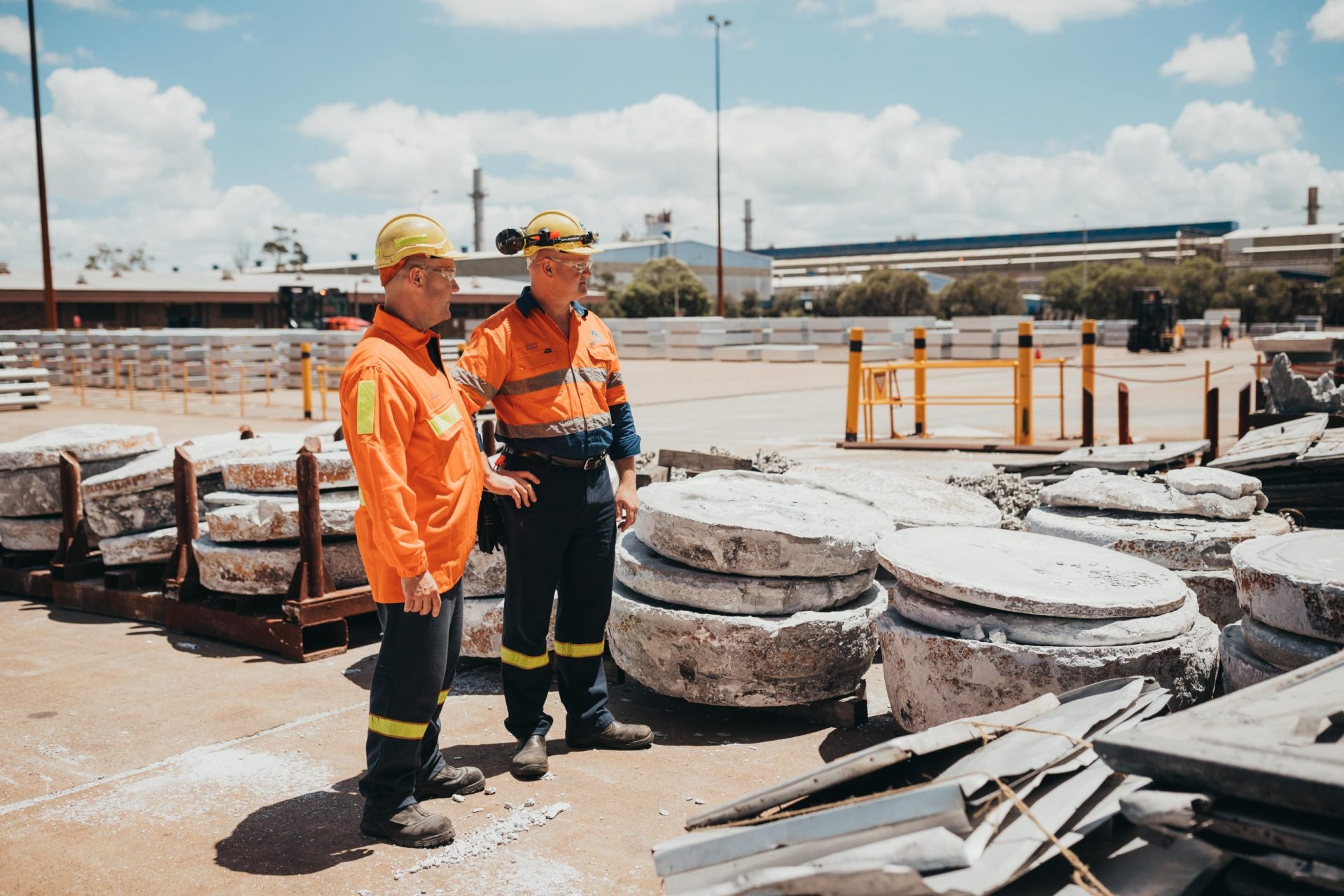
Lifting the lid on waste and the way we process it.
A few months ago a project was launched to look at the way Tomago managed their scrap steel and to optimize the scrap value, that’s either sold on the scrap market or re-processed on-site.
There was a two-fold purpose to the plan, the clean-up delivering a financial return while at the same time ridding the site of unwanted and unsightly mess.
With the launch of the project, Casthouse Maintenance Supervisor Brendon O’Donnell and his Maintenance team had identified approximately 40 Tonnes of cast-iron, in the form of used ingot moulds.
Business Improvement team member Jeremy Ireland was able to negotiate a premium tonnage rate with Molycop’s Waratah foundry which saw an 82% increase in the initial submitted price. This was a $11,480 cash return to the business.
A portion of the steel scrap is being re-cast by Molycop and returned back to Tomago in the form of anode pins. The rest? Most likely already being used for a thousand other purposes.
There was an even bigger reward to come though. Whilst Jeremy was doing a process audit, 3,500 tonnes of scrap steel was identified offsite which returned a massive $1.3 million to the company’s coffers.
On completion of the offsite scrap recovery, a recycling process was set in stone to ensure a constant flow of reusable scrap which returns in excess of $50k a month to the business.
The scrap steel recovery was turned around in five weeks, and it came as a big cash injection at a critical time.
For Jeremy though, collecting and recycling the unwanted metal is simply a smart move that adds value to the way Tomago is using its resources, a sentiment echoed by Sam Lloyd who says scrap aluminium is also getting a second chance at Tomago courtesy of a bit of ‘out of the box’ thinking by the scrap metal recovery team.
“We were storing our scrap aluminium on-site, mostly recovered from stopped pots. When we had enough to fill a skip bin we were sending it to Weston Aluminium at Kurri Kurri and they were giving us 40 per cent of the LME (London Metal Exchange) value for it,” Sam said.
Three bins of metal handled by Weston Aluminium typically returned between $45,000 and $55,000 each month (depending on the LME valuations) but a way was found to keep the metal in-house for full reclamation, a 100 per cent return on 30 tonnes of aluminium each week by running it through a single furnace dedicated to handling the recovered waste.
All-up, the implementation of this internal process will deliver an annual benefit of more than one million dollars.
The change to in-house recycling did require some procedural changes but the process alterations were greenlit by management and accepted by everyone.
For Jeremy the success of the waste metal recovery efforts revolves around a strong team, from management all the way through to Corey Lundy and his team who, quite literally, did the heavy lifting on the iron.
“It’s been a big team effort. It’s everyone’s responsibility to look at waste from a different angle. The impact we’re having now is impressive. It’s green, we’re recycling and we’re making things more sustainable,” Jeremy said.
Leigh Osmond and the PTA Maintenance crew, along with the LMO day workers and Brooke McBride from procurement, saw a number of scrap value opportunities in unusual places.
The first was to collect stainless steel chisel tips and send them back to their manufacturer, earning $1,700 a tonne or close to 10 times the usual scrap value.
They were also able to separate high value scrap for a return of more than $5,000. The team now has separate bins for high value brass and copper and expects to recoup around $12,000 a year from the separation process.
Sam says the waste recovery efforts are ongoing rather than simply being a one-off exercise.
“We keep exploring; we make room for change. The business is constantly evolving so we’ve got to change with it; we’ve got to do things differently.”
So if you see any opportunities for high value scrap in your area – brass, copper, stainless steel or cast Iron (otherwise known as the ‘Big Four’) get in touch with Jeremy.
Odds are it will be worth a bit more than a car boot load of bottles and cans cashed-in at the recycling depot.

